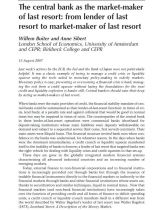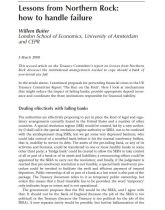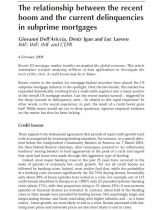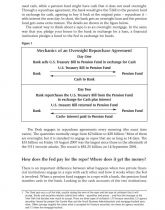Analýza: The First Global Financial Crisis of the 21st Century
Skryť detaily | Obľúbený- Kvalita:96,6 %
- Typ:Analýza
- Univerzita:Paneurópska vysoká škola
- Fakulta:Fakulta ekonómie a podnikania
- Kategória:Finančníctvo
- Podkategória:Financie
- Predmet:Global economics
- Ročník:3. ročník
- Rozsah A4:204 strán
- Zobrazené:2 403 x
- Stiahnuté:70 x
- Veľkosť:1,1 MB
- Formát a prípona:PDF dokument (.pdf)
- Jazyk:anglický
- ID projektu:13214
- Posledna úprava:04.11.2020
Global financial markets are showing strains on a scale and scope not witnessed in the past three-quarters of a century. What started with elevated losses on US subprime mortgages has spread beyond the borders of the United States and the confines of the mortgage market. Risk spreads have ballooned, liquidity in some market segments has dried up and large complex financial institutions have admitted significant losses. Bank runs are no longer the subject exclusively of history.
These events have challenged policy-makers, and the responses have varied across regions. The ECB has injected reserves in unprecedented volumes. The Bank of England participated in the bailout and, ultimately, the nationalization of a depository, Northern Rock. The US Federal Reserve has introduced a variety of new facilities and extended its support beyond the depository sector.
These events have also challenged economists to explain why the crisis developed, how it is unfolding, and what can be done. This volume compiles contributions by leading economists in VoxEU over the past year that attempt to answer these questions. We have grouped these contributions into three sections corresponding to those three critical questions.
Why did the crisis happen?
The first set of articles contains reflections on the reasons for the crisis. Although it is tempting to suggest that the crisis was inevitable with hindsight, several articles emphasize the inherent uncertainty of economic analysis. Dell’Ariccia, Igan and Laeven discuss the role of uncertainty in the subprime lending boom. Persaud and Danielsson both caution against the overreliance on standardized quantitative risk models. Finally, Wyplosz counsels prudence when analysing the crisis and its causes in the face of high uncertainty.
...
These events have challenged policy-makers, and the responses have varied across regions. The ECB has injected reserves in unprecedented volumes. The Bank of England participated in the bailout and, ultimately, the nationalization of a depository, Northern Rock. The US Federal Reserve has introduced a variety of new facilities and extended its support beyond the depository sector.
These events have also challenged economists to explain why the crisis developed, how it is unfolding, and what can be done. This volume compiles contributions by leading economists in VoxEU over the past year that attempt to answer these questions. We have grouped these contributions into three sections corresponding to those three critical questions.
Why did the crisis happen?
The first set of articles contains reflections on the reasons for the crisis. Although it is tempting to suggest that the crisis was inevitable with hindsight, several articles emphasize the inherent uncertainty of economic analysis. Dell’Ariccia, Igan and Laeven discuss the role of uncertainty in the subprime lending boom. Persaud and Danielsson both caution against the overreliance on standardized quantitative risk models. Finally, Wyplosz counsels prudence when analysing the crisis and its causes in the face of high uncertainty.
...




